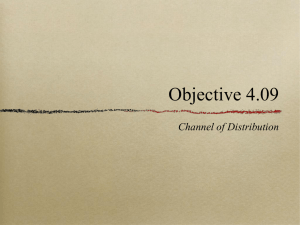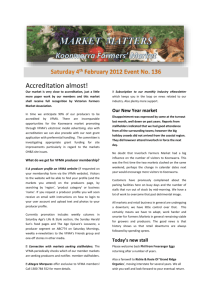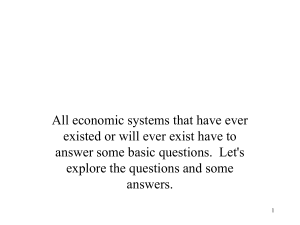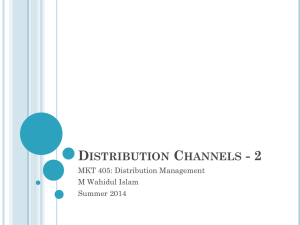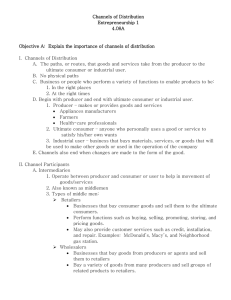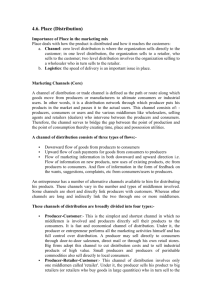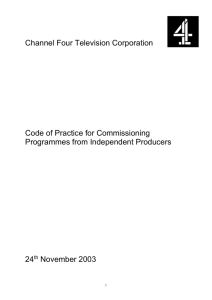Resources Page
advertisement
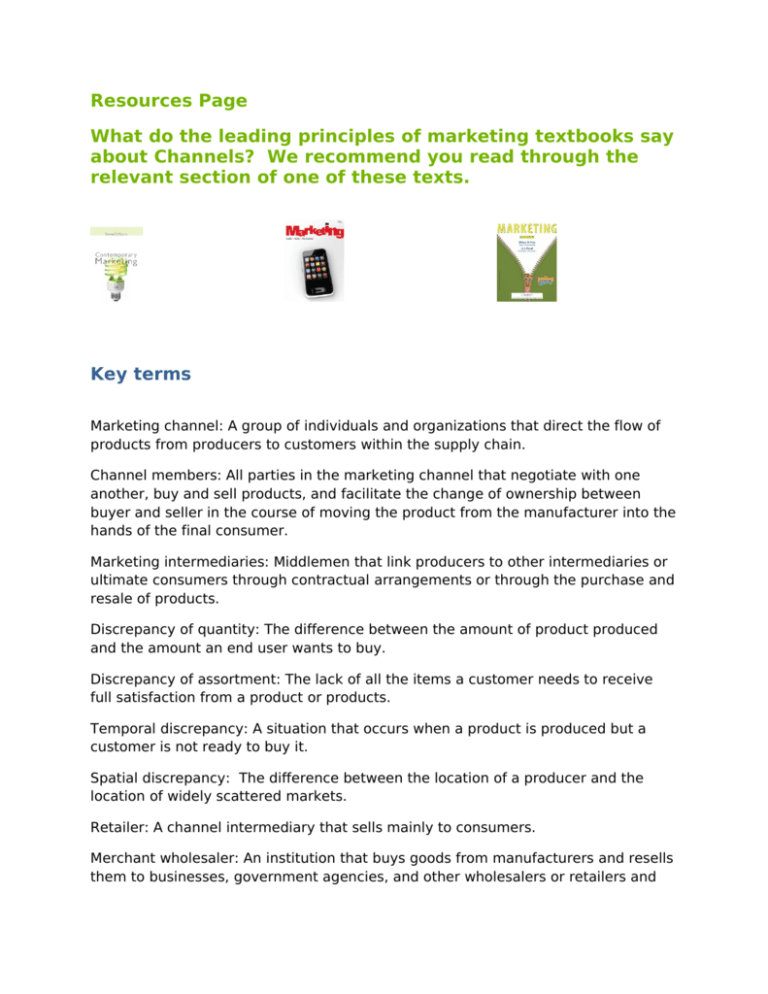
Resources Page What do the leading principles of marketing textbooks say about Channels? We recommend you read through the relevant section of one of these texts. Key terms Marketing channel: A group of individuals and organizations that direct the flow of products from producers to customers within the supply chain. Channel members: All parties in the marketing channel that negotiate with one another, buy and sell products, and facilitate the change of ownership between buyer and seller in the course of moving the product from the manufacturer into the hands of the final consumer. Marketing intermediaries: Middlemen that link producers to other intermediaries or ultimate consumers through contractual arrangements or through the purchase and resale of products. Discrepancy of quantity: The difference between the amount of product produced and the amount an end user wants to buy. Discrepancy of assortment: The lack of all the items a customer needs to receive full satisfaction from a product or products. Temporal discrepancy: A situation that occurs when a product is produced but a customer is not ready to buy it. Spatial discrepancy: The difference between the location of a producer and the location of widely scattered markets. Retailer: A channel intermediary that sells mainly to consumers. Merchant wholesaler: An institution that buys goods from manufacturers and resells them to businesses, government agencies, and other wholesalers or retailers and that receives and takes title to goods, stores them in its own warehouses, and later ships them. Agents and brokers: Wholesaling intermediaries who do not take title to a product but facilitate its sale from producer to end user by representing retailers, wholesalers, or manufacturers. Industrial distributor: An independent business organization that takes title to industrial products and carries inventories. Logistics: The efficient and cost-effective forward and reverse flow as well as storage of goods, services, and related information, into, through, and out of channel member companies. Logistics functions typically include transportation and storage of assets, as well as their sorting, accumulation, consolidation and/or allocation for the purpose of meeting customer requirements. Direct channel: A distribution channel in which producers sell directly to consumers. Dual distribution: The use of two or more marketing channels to distribute the same products to the same target market. Strategic channel alliance: An agreement whereby the products of one organization are distributed through the marketing channels of another. Efficiency in Exchanges Provided by an Intermediary Marketing intermediaries can reduce the costs of exchanges by performing certain services or functions efficiently. Even if producers and buyers are located in the same city there are costs associated with exchanges. As the above figure shows, when four buyers seek products from four producers, there are 16 transactions (4 producers x 4 buyers). If one intermediary severs both producers and buyers, the number of transactions can be reduced to 8 (4 producers + 4 buyers). Intermediaries are specialists in facilitating exchanges. Typical Marketing Channels for Consumer Products Because marketing channels that are appropriate for one product may be less suitable for others, many different distribution paths have been developed. Channel A depicts the direct movement of products from producer to consumers. Producers that sell products directly from their factories to end users use direct marketing channels, as do companies that sell their own products via the Internet. Channel B, which moves goods from the producer to a retailer and then to customers, is a frequent choice of large retailers because it allows them to buy in large quantity from manufacturers. Channel C takes goods from the producer to a wholesaler, then to a retailer, and finally to a consumers. It is a practical option for producers that sell to hundreds of thousands of customers through thousands of retailers. Channel D, through which goods pass from producer to agents to wholesalers to retails and then to consumers, is used frequently for products intended for mass distribution, such as processed foods. Typical Marketing Channels for Business Products Because marketing channels that are appropriate for one product may be less suitable for others, many different distribution paths have been developed. Channel E illustrates the direct channel for business products. In contract to consumer goods, more than half of all business products, especially expensive equipment, are sold through direct channels. In Channel F, an industrial distributor facilitates exchanges between the producer and the customer. Channel G, employs a manufacturers’ agent, an independent business person who sells complementary products of several producers in assigned territories and is compensated through commissions. Unlike an industrial distributor, a manufacturer’s agent does not acquire title to the products, and usually does not take possession. Channel H includes both a manufacturers’ agent and an industrial distributor. The channel may be appropriate when the producer wishes to cover large geographic area but maintains no sales force due to highly seasonal demand or because it cannot afford a sales force.



